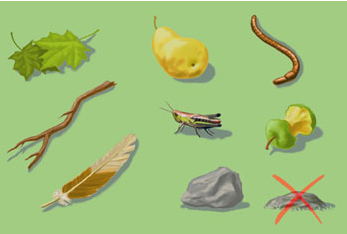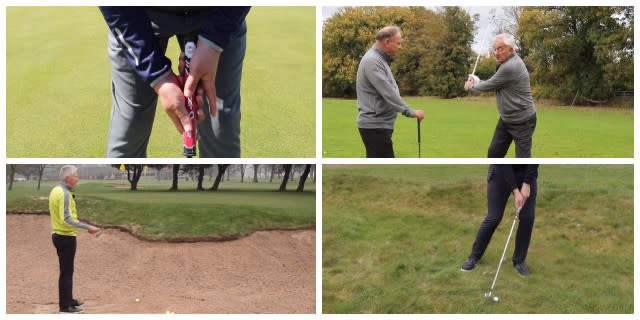Loose Impediments and Movable Obstructions - Which is which?
Post from rules expert, Barry Rhodes writer of '999 questions on the rules of golf'
I am surprised how many golfers are confused as to whether an object on the course is a loose impediment or a  movable obstruction. This is an important matter, because there are several Rules that require players to know the differences, so that they may take a permitted advantage, or avoid a penalty. First, let us look at the two Definitions;
movable obstruction. This is an important matter, because there are several Rules that require players to know the differences, so that they may take a permitted advantage, or avoid a penalty. First, let us look at the two Definitions;
“Loose impediments’’ are natural objects, including: stones, leaves, twigs, branches and the like, dung, and worms, insects and the like, and the casts and heaps made by them, provided they are not: fixed or growing, solidly embedded, or adhering to the ball.
Sand and loose soil are loose impediments on the putting green, but not elsewhere.
Snow and natural ice, other than frost, are either casual water or loose impediments, at the option of the player.
Dew and frost are not loose impediments.
An “obstruction’’ is anything artificial, including the artificial surfaces and sides of roads and paths and manufactured ice, except:
a. Objects defining out of bounds, such as walls, fences, stakes and railings;
b. Any part of an immovable artificial object that is out of bounds; and
c. Any construction declared by the Committee to be an integral part of the course.
An obstruction is a movable obstruction if it may be moved without unreasonable effort, without unduly delaying play and without causing damage. Otherwise, it is an immovable obstruction.
Note: The Committee may make a Local Rule declaring a movable obstruction to be an immovable obstruction.
You will see that I have underlined one word in each Definition, which is the key word for you to remember; loose impediments are natural objects and movable obstructions are artificial objects.
Now let us consider a few situations where it is important for players to make the distinction between an obstruction and a loose impediment;
- A player may move a movable obstruction from anywhere on the course, including hazards, and there is no penalty if they cause their ball to move while doing so; the ball must be replaced (Rule 24-1)
- Loose impediments may be removed, except when both the loose impediment and the player’s ball lie in or touch the same hazard (Rule 24-1). However, if the ball is moved while the loose impediment is being removed, the player incurs a penalty of one stroke and the ball must be replaced.
- A player does not incur a penalty if they touch an obstruction on their backswing when playing from a bunker or water hazard, but they do incur a penalty of two strokes or loss of hole if they touch a loose impediment in the same circumstances (Note to Rule 13-4 and Rule 13-4c).
- Note that whilst stones are obviously loose impediments, Committees often establish a Local Rule that says, “Stones in bunkers are movable obstructions”, because it is considered that the stones could represent a danger to players if they are hit during a stroke.
Here is a link to some questions that I have received on loose Impediments.
http://www.barryrhodes.com/2010/02/questions-on-loose-impediments.html
Related Content: winter golf
Article from Barry Rhodes author of the book, ‘999 Questions on the Rules of Golf 2016’
Barry is author of the book, ‘999 More Questions on the Rules of Golf 2016’ and writes a regular blog of miscellaneous content on the rules of Golf at www.barryrhodes.com
Related Video
Comments
Barry Rhodes
Barry is author of the book, '999 Updated Questions on the Rules of Golf 2012 - 2015' and writes a regular blog of miscellaneous content on the rules of Golf at www.barryrhodes.com
Latest Articles




















